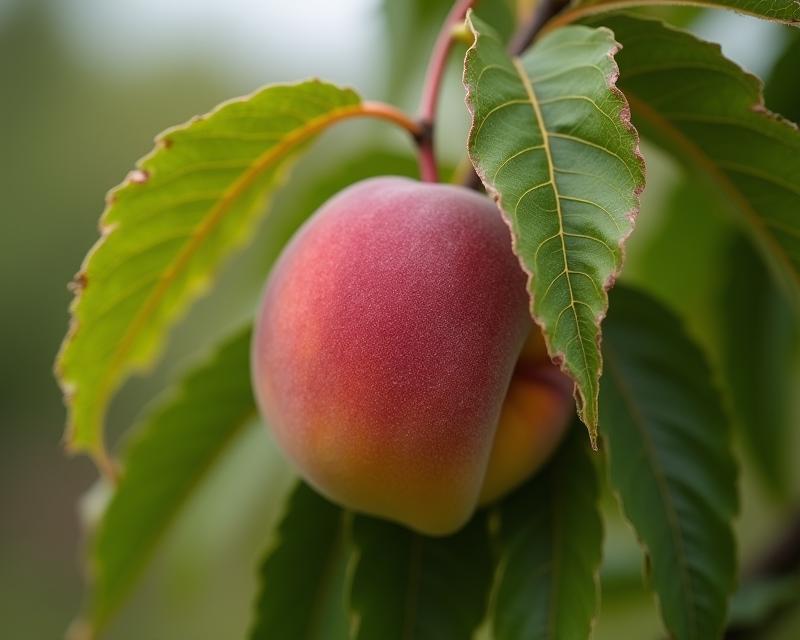Peach Leaf Curl: A Farmer's Guide
Publish in Crops el 21/07/2025 20:34
Peach Leaf Curl: Protecting Your Stone Fruits
Peach leaf curl (PLC) is a common fungal disease that can significantly impact peach, nectarine, plum, and apricot trees. It's a frustrating problem for growers, but understanding the disease – its causes, symptoms, and effective treatments – is key to protecting your valuable fruit crops. This guide will walk you through everything you need to know to identify, manage, and prevent PLC on your farm or garden.

What Causes Peach Leaf Curl?
PLC is caused by the fungus Taphrina deformans. It thrives in cool, wet spring weather. The fungus overwinters on infected leaves and buds. As temperatures warm and moisture returns, the fungus germinates and infects new growth. The disease is most prevalent during the spring, particularly when temperatures are between 50°F and 70°F (10°C and 21°C) and humidity is high. The fungus essentially causes the leaves to swell and curl, giving the disease its name.
Identifying Peach Leaf Curl
The most noticeable symptom of PLC is the characteristic curling of new leaves. These leaves often appear distorted, swollen, and reddish-purple in color. The curling can be quite severe, sometimes making the leaves look like they're wrapped in a tight spiral. You might also notice a general decline in tree vigor if the disease is severe and recurring. In severe cases, the leaves may drop prematurely. Young fruit can also show signs of distortion, although this is less common.
Treatment and Management
While there's no cure for PLC once a tree is infected, several management strategies can help control the disease. Fungicides are the most common treatment. Apply a preventative fungicide spray during bloom, following the manufacturer's instructions carefully. Look for fungicides containing ingredients like copper or chlorothalonil. Pruning is also important. Remove and destroy infected leaves and shoots as soon as you spot them. This helps to reduce the fungal inoculum for the following year. Sanitation is key – rake up and destroy fallen leaves in the fall to minimize overwintering fungal spores. Ensure good air circulation around your trees through proper pruning techniques. Avoid overhead irrigation, as this can create a humid environment that favors fungal growth.
Preventing Recurrence
Prevention is always better than cure! Here are some crucial steps to prevent PLC from returning year after year:
- Choose resistant varieties: Some peach and nectarine varieties are more resistant to PLC than others.
- Proper pruning: Open up the canopy to improve air circulation.
- Sanitation: Rake and destroy fallen leaves in the fall.
- Fungicide application: Apply preventative fungicide sprays during bloom, especially in areas prone to PLC.
- Monitor weather conditions: Be extra vigilant during cool, wet spring weather.
By implementing these strategies, you can significantly reduce the impact of peach leaf curl and enjoy a bountiful harvest of delicious stone fruits!





